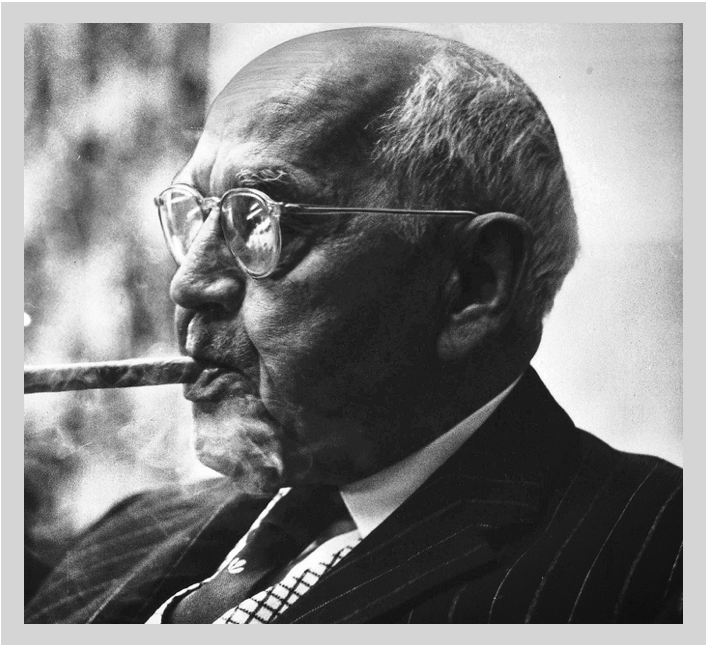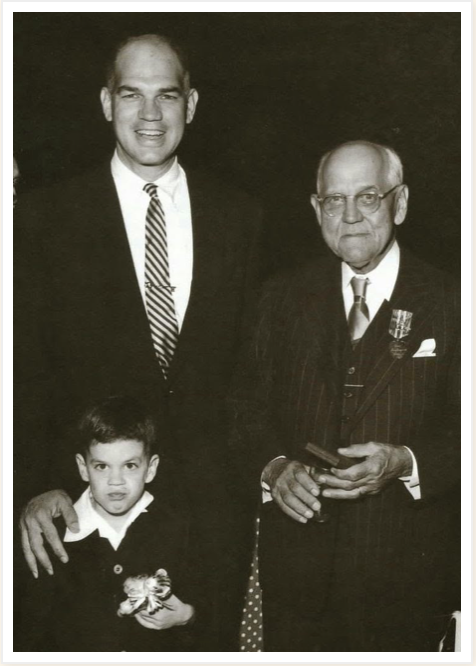
Julian P. "Pappy" Van Winkle, Sr.
The One and Only "Pappy"
Julian Proctor "Pappy" Van Winkle Sr. was born in Danville, Kentucky, in 1874. The Van Winkle family was a very affluent clan that emigrated from Holland to America along with the very first Governor of New York, Peter Stuyvesant, in 1647. Pappy’s grandfather, Abraham Van Winkle, moved to Kentucky during the late 18th Century. His father, John Van Winkle, a lawyer with considerable assets, had married Pappy’s mother, Louise Dillion, in January 1867; they would go on to have seven children, six sons and one daughter.
When Julian became of age, he moved 80 miles to the northwest, to Louisville, which was a booming city whose reputation was just being formed as a ‘whiskey town’. Van Winkle first got involved with bourbon in 1893 when he became a traveling salesman for W.L. Weller & Sons. His job was to travel around the states of Kentucky and Indiana by horse and buggy, peddling Weller’s liquor to taverns, saloons, and other retail outlets. In 1904, he married his wife Katherine (“Katie”) when he was 29. Together, they had two children: in 1910, a daughter, Mary, and in 1912, a son, Julian Jr.
In 1909, William Weller died, and Julian and a partner purchased the A. Ph. Stitzel Distillery from his two sons who did not want to be in the bourbon business. This was the facility that produced all the bourbon for William Larue Weller’s wholesale company. The brands it produced at the time were large ones such as Old Fitzgerald, Old W.L. Weller, Cabin Still, Mammoth Cave, and Old Rip Van Winkle. The latter brand, which carried Julian’s popular upstate New York last name “Van Winkle,” was not named after Pappy; it was named after the famous children’s tale written by Washington Irving, published in 1819. Other smaller brands included Old Elk, Old Mock, and Belle of Bourbon.
As luck would have it, when the Volstead Act passed, Stitzel-Weller won what was essentially a golden ticket and was granted one of only six licenses by the federal government to produce whiskey for “medicinal purposes” during Prohibition.
A little more than a year after prohibition ended on the first Saturday of May in 1935, the A. Ph. Stitzel and W.L. Weller distilleries merged. The new entity was anointed as “The King of Distilleries” and renamed itself the Stitzel-Weller Distillery. The distillery’s reputation was already renowned based on its core products of wheated bourbons, which were unique in that they used wheat as the second flavoring grain instead of rye. This gave the finished product a softer, smoother taste. After years of tremendous popularity, the nickname of the distillery changed to “The Cathedral of Bourbon.”
Julian Van Winkle Sr. was a true distiller who lived by the motto “We make fine bourbon at a profit if we can, at a loss if we must, but always fine bourbon." Pappy had an affinity for his family and the legacy of his family name. He brought into the company his son Julian Proctor Jr., his son-in-law, King McClure, and eventually (once he grew into a young man) his grandson, Julian Proctor Van Winkle III.
Pappy ran the Board of Directors of the company that became a real-life whiskey empire, and directed the family’s assets until almost the very end. Pappy Van Winkle Sr. died in February 1965 at the age of 91 and was buried in Louisville’s Cave Hill Cemetery.
Julian Van Winkle, Jr. sold the Stitzel-Weller distillery in 1972 under pressure from the co-owners in his family to Norton-Simon, who renamed it the Old Fitzgerald Distillery. It was then promptly sold again to Distillers Corporation Limited, then again to Guinness, who later became United Distillers (UD). UD has the foresight to change the name back to Stizel-Weller distillery before that company went on to be reformed and renamed Diageo.
Julian Van Winkle III, who managed to keep the Van Winkle brands and continue to bottle and sell the brands after his father’s death, eventually partnered with the Sazerac family of New Orleans and the Buffalo Trace Distillery to produce the Old Rip Van Winkle and Pappy Van Winkle Family reserve brands. Rights to the rest of the Stizel-Weller distilleries’ brands were sold off, including W. L. Weller, Old Fitzgerald, Rebel Yell, and Cabin Still.
Contributed by Tracy McLemore, Fairview, Tennessee
The Pappy Van Winkle line of whiskey made by Buffalo Trace Distillery. Pictured above from left to right:
Van Winkle Special Reserve 12-Year-Old Lot “B”; Van Winkle Family Reserve Rye; Pappy Van Winkle Family Reserve 20-Year-Old; Pappy Van Winkle Family Reserve 23-year-old; Pappy Van Winkle Family Reserve 15-Year-old; Old Rip Van Winkle 10-Year-old.
“All in the Family”:
Pappy, Julian Jr., and Julian III
circa 1954
Pappy Van Winkle Family Reserve 23-year-old: World's Most Expensive Bourbon
Photos of Old Rip Van Winkle are provided by Old Rip Van Winkle Distillery







